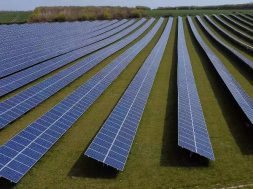
PV Module Improvements to Drive Down Solar Prices in 2020s: WoodMac
In the 2020s, an improvement in module efficiency and power class will drive declining investments and ultimately lower solar LCOE
The global solar industry has seen tremendous growth over the past decade as the annual demand for solar increased year on year while the cost of solar decreased significantly. In the 2020s, the cost of solar panels will continue to fall, albeit at a much slower pace. Instead, improvements in module efficiency and performance class will drive declining investments and ultimately lower solar energy costs (LCOE), new research by Wood Mackenzie has shown.
In its latest report, WoodMac examined three technologies that have the potential to improve the performance class and performance of solar modules: large wafers, n-type cells, and cell and module-level techniques.
The author of the report, Dr. Xiaojing Sun said, “We have found that PV modules made from large wafers such as the M6, M10 or G12 can reduce the investment costs of a utility-scale solar project by 3 to 9 percent. The cost savings would appeal to solar developers and installers, which will drive market adoption. “
She said a majority of the major silicon module manufacturers have announced large module products, and many of them are on track to produce large modules commercially between Q4 2020 and Q4 2021.
Wood Mackenzie’s data shows that the total module manufacturing capacity of M6, M10 and G12 wafer-based modules will reach 28 GW, 63 GW and 59 GW respectively by the end of 2021. By 2025, the production capacity of the modules used will be forecast to exceed 90 GW of M10 and G12 wafers, making them the dominant technologies in terms of production capacity.
Dr. Sun added, “It is important to note that bringing large modules to market depends on the co-development of system balance components such as inverters and trackers to accommodate the higher current and larger size.
“Several industry alliances have been formed since early 2020 to ensure that the entire solar ecosystem evolves to support large-scale module rollouts. If the industry’s efforts bear fruit, we predict that large module shipments will account for approximately 40% of total crystalline silicon module shipments in 2021. Modules with wafer sizes smaller than M6 will be withdrawn from the market by the end of 2025. “
The report also examined n-type modules such as HIT and TOPCon, which could generate more electricity per panel due to higher cell efficiencies and lower degradation rates. In contrast to large modules, n-type modules currently do not result in system investments and LCOE savings in utility-scale solar projects. The high product cost of N-type modules offsets the cost savings without systems at the system level.
She said: “Our analysis shows that TOPCon and HIT modules require a performance class premium of at least 40 W and 90 W or a price reduction of 6 percent or 20 percent in order to be competitive with Mono PERC. Granted, these are big jobs. Even so, significant efficiency improvements and production cost reductions are a must for n-modules to achieve Mono PERC as the next generation solar module of choice. “
Research suggests that the 2020s will be a decade of rapid innovation in solar module technology, resulting in a significant increase in module performance class, better performance, and more versatile applications.
Dr. Sun added, “Innovations in module technology, along with reducing hardware costs, will be the fundamental driving force behind the continued reduction in solar LCOE in the new decade.”












